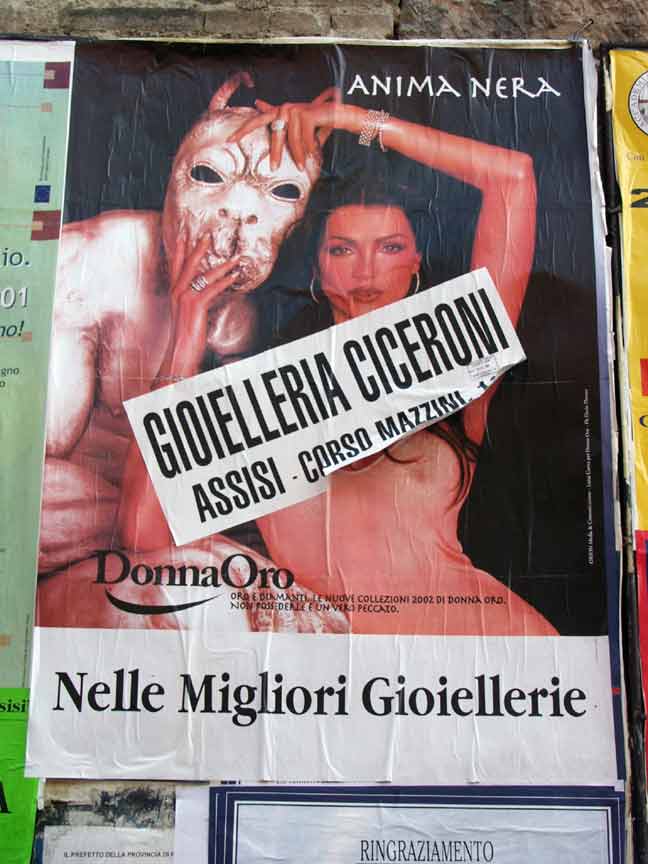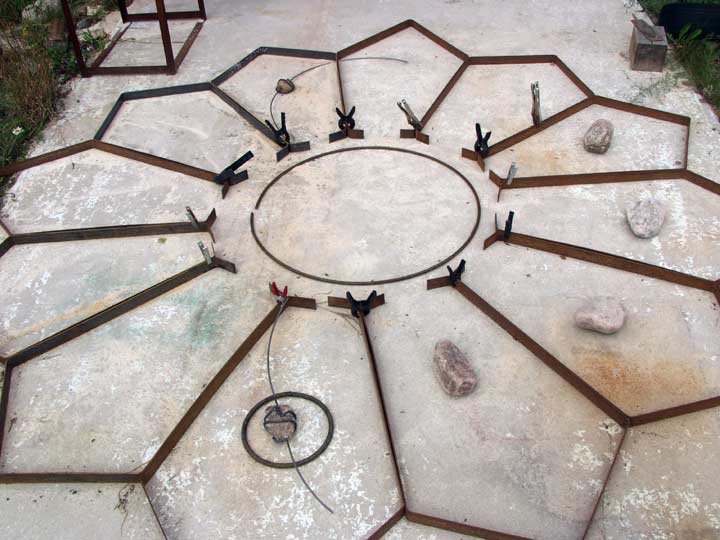|
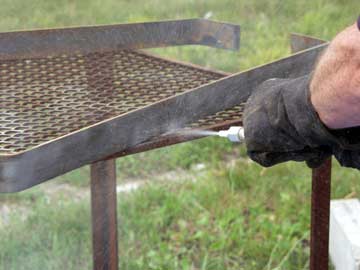 |
 |
|
|
The Rose went from paper to steel over time. Which is, I suppose, a description of more things in the world than sculpture. We had no good idea of the size of the window until we laid it out in its first mock-up on the slab in front of the atelier. Then we had sandblasting and welding, primer coats then color. We set the jewel-stones in their spiral arms which would radiate clockwise from the Monkey side. Sandblasting took some time but the painting went quickly and well; the air-pressure tool system Slag installed in the shop is - on the face of it - a salient feature of the Industrial Revolution. Yet it was the Cistercians, copying Arabs, who pioneered hydraulics & first caught on to the powers latent in pressure.
|
|
|
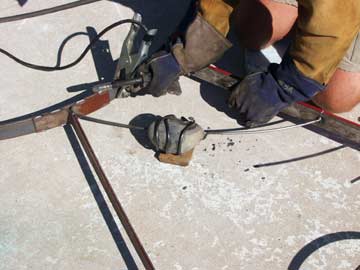 |
 |
|
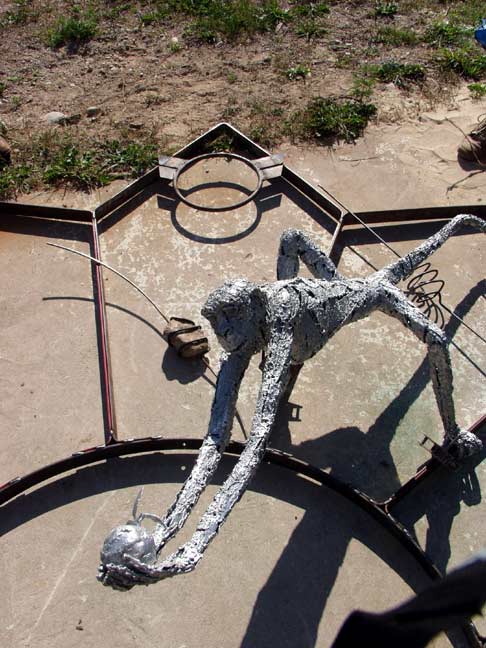 |
Once again Bill Allen come thru in a very big way. Everything we asked him to do with the Monkey was captured exactly - expressions, gesture, muscle tone - he even managed to make the peach look refreshingly tempting. We placed Kenny's sigil in the peak of the top petal. JackyO is going to paint the Monkey - Bill gave it to us in its galvanized state. We have decided on a gold and ruby red color scheme for the steel frame of the rose - the cardinal petals will be red and the rest of them gold. It will be a bright object with a dark spirit - an Anima Nera - something which blends the optimism of being offered a juicy gift with the apprehensive blowback of actually accepting that gift. Should you take candy from strangers? Sure - if you really need what's under the shiny wrapper.
|
|
|
Pooler can still quote verbatim Abbot Suger's excited explanation of their handwork as they drank in the newly chiseled stone of the airy chapel and the sparkling jewels of its rainbow colored windows. Suger believed in the Alchemical powers of such places; he saw his new church as "possessing the ability to transform that which is material to that which is immaterial." To the Abbot, pioneer of the Gothic, it was as if he could see himself "dwelling, as it were, in some strange region of the universe which neither exists entirely in the slime of the earth nor entirely in the purity of Heaven; and that, by the grace of God," he saw himself "transported from this inferior to that higher world." It was, he explained to Pooler, as if matter itself had been conquered and light stood victorious.
|
|
|
|
|
|
|
|
|
|
|
|
|









